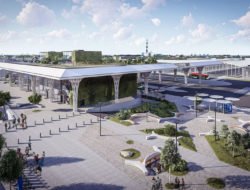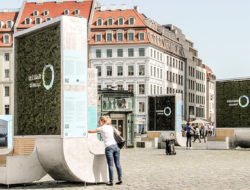London architects unveil “CarTube“: a network of underground tunnels designed to take motor traffic in the capital. The architects thus hope to release the city from the grip of the automobile.
To improve air quality and limit road traffic, London was one of the first metropolises to introduce a city toll. Since 2003, the entire city centre has been subject to the Congestion Charge, a traffic charge of approximately 13 Euro of which only residents and users of low-emission cars are exempted.
Less hypocritical than the traffic jam policy, the measure has not been welcomed by all. First of all because it doesn’t prevent those with higher purchasing power from polluting, second because its effects are confined to the emission of ultra-fine particles. To solve the problem, the London firm PLP Architecture has drawn up a slightly more innovative and less punitive solution.
The idea? To move all automobile traffic into a vast network of underground tunnels. With one peculiarity: the “CarTube“, formed by small-diameter tunnels, would be a network of tracks in constant movement controlled by artificial intelligence. A bit like conveyor belts, which the cars would get onto. “Drivers would be in control of their vehicles most of the time, but with the development of autonomous electric vehicles, they could go into automatic pilot on these belts, Lars Hesselgren, head of Research at PLP Architecture explains. Furthermore, these tracks would operate at constant speed, which would reduce delays and accidents.”
Freeing up the surface
According to the firm, if all the cars travelled at 65 km/h (40 mph), travel time would decrease by up to 75%, which means a journey from the city centre to Heathrow airport would take just 14 minutes compared to the current 34 minutes. At constant speed, the “CarTube” cars could even carry up to 40,000 passengers per hour.
Underground, traffic would thus be completely fluid. “No ventilation system would be necessary, because electric vehicles are “zero-emission” certified, the head of Research insists. The surface would be freed of all pollution. The banks of the Thames could be revegetated and redeveloped for bicycles and pedestrians. Presenting his vision to a panel of international experts, Lars Hesselgren stated that he got the idea from the company motto: “Roads are made for people, not for cars.” A not so distant dream, since according to the research institute McKinsey Global, sales of electric cars will quintuple by 2022. While most big car manufacturers foresee being able to build fully autonomous cars between 2020 and 2025.
Cartube © PLP Architecture
Tags: autonomous cars, CarTube, PLP Architecture, pollution, tunnels







































